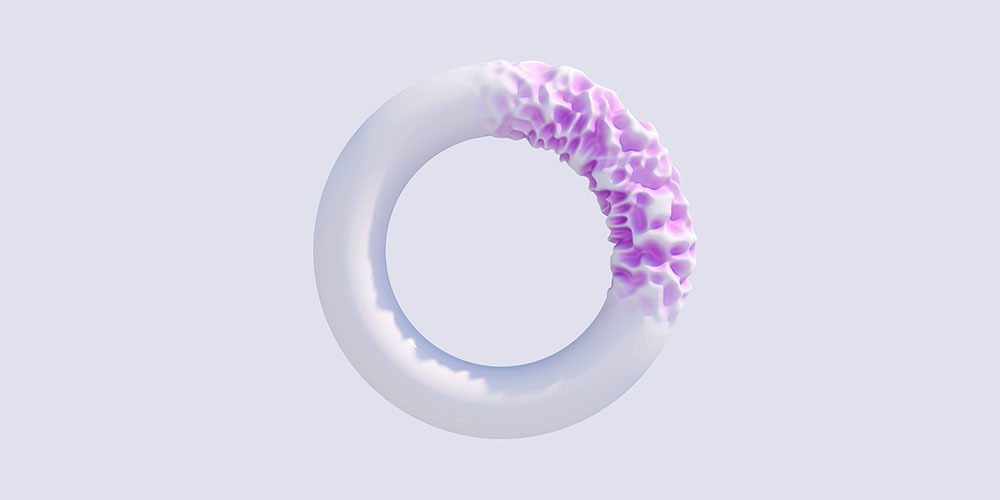As your business grows, so does your email list – from product signups to webinar leads. While getting new subscribers is great, it’s easy to fall into the trap of thinking that a bigger email list is always better.
But the reality is people and their circumstances change. Maintaining a bloated email list hurts your engagement metrics and your bottom line.
We asked SaaS email marketers across the internet how they maintain their email list. Then we wrote this post with the key takeaways and common patterns.
Don’t wait for the muse. Apply this step-by-step method to write high-performing email campaigns in hours, not weeks.
Why email list hygiene is critical
- Protect your sender and brand reputation. Pruning your list reduces bounce rates, spam complaints, and helps you avoid spam traps. This also increases your email deliverability and helps keep your emails out of spam folders.
- Remain compliant with email regulations. List cleaning prevents you from incurring violations.
- Clearer engagement rates. When your email list only contains subscribers who are truly interested in your brand and product, this helps you better gauge content resonance.
- Save on email service provider costs. Since most ESPs charge based on subscriber volume, businesses on a budget would like to keep their subscriptions with cheap email marketing platforms. The main qualifying question for cleaning your list is: “am I ready to pay for this subscriber so that I have an opportunity to stay in touch and convert them later?”
If you have a large email list but are working on a tight budget, use these ethical tactics to save money on high volume email.
Removing vs. archiving vs. suppressing email subscribers
Before we dive into the criteria for each one, let’s differentiate between the three.
Removing a subscriber involves the total deletion of their data.
Archiving a subscriber excludes them from your active subscriber list while preserving the subscriber’s data. Aside from potential re-engagement, some companies retain the data for internal records and regulatory reasons.
Suppressing a subscriber puts them on a block list because they sent a clear “do not contact” signal.
Common criteria for removing, archiving, or suppressing subscribers
Based on what we’ve gathered, here are some qualifiers email marketers use when deciding to remove, archive, or suppress subscribers.
When to remove
Immediate removal applies to:
- Hard bounces. This indicates that the email address is fake or dead.
- Unsubscribes
- Known spam traps
Depending on your business stage and other factors, you can also remove subscribers when:
- Subscriber hasn’t engaged with your emails for a certain period (e.g. 180 days)
- No product activity for a certain period
When to archive
Usually done for subscribers you want to re-engage in the future:
- Subscriber hasn’t engaged with your emails for a certain period (e.g. 60 days)
- No product activity for a certain period (e.g. 120 days)
- Churned users
When to suppress
Immediately suppress subscribers when they send “do not contact” signals which are:
- Unsubscribes
- Hard bounces
- Spam complaints
- Regulatory exclusions. Subscribers request data deletion under regulations like GDPR
Some email marketers also suppress subscribers who are unengaged for a certain period of time (e.g. 90 days of no activity).
Email list hygiene best practices
Never use purchased email lists
While it may be slow and painstaking, building your email list organically is always better than taking the unethical shortcut of purchasing lists.
Snov.io founder and CEO Alex Kratko shares how this always backfires:
“We never use purchased lists. I’ve seen domains blocklisted for nearly a year because of them.”
Hygiene starts at acquisition
To save you time and effort in the long term, it’s best to stop bad actors and remove invalid signups at acquisition.
Food Allergy App CEO Sumit Chhabra recommends using email validation tools along with multiple sign-up steps:
“We maintain email hygiene at the gate. Every sign-up goes through an email validation service, along with multiple sign-up steps. This ensures that people who trust us are willing to spend a few extra seconds to join.”
Clean your list regularly
Maintaining email list hygiene isn’t a one time task. Regular cleaning can help save money and protect your sender reputation.
Look beyond email engagement metrics
Engagement metrics don’t give the whole picture, that’s why other factors should be taken in consideration.
Product activity
Legiit founder and CEO Chris M. Walker says:
“At Audiit.io, we use product triggers to override list activity. A user who hasn’t opened emails but ran 3 audits last week stays in.”
Business model and use case
Arcade’s head of growth marketing Alan Harris shares how these can help you decide what to do with unengaged subscribers:
“I place unengaged subscribers in a bit of a cold storage swim lane. From there, the next steps can vary depending on your business model and use case.
For example, if you’re in B2B SaaS and you have lower volume and send frequency, you may just cut your losses and suppress them.
If you’re in B2C and have more opportunities for re-engagement, you may try a ‘Hey it looks like you aren’t interested in hearing from us any more. If you want to stay subscribed, reply to this email / click this button, otherwise we’ll opt you out’ message before moving to cold storage.”
Maximize ESP features that automate the process
ESPs usually have features that do the heavy lifting of cleaning your email list. Suped co-founder Michael Ko says that your job is to double check these automations and manually handle removal requests:
“Your ESP should automatically add hard bounces, unsubscribes, and spam complaints to a master suppression list.
Your job is to double check that these automations are turned on in your settings. You can also manually add people if they ask to be removed over a support ticket or something.”
Use specialized professional email marketing tools
Your ESP can do a lot of things but not everything. Use specialized tools like email validation platforms to help keep your list clean.
Check out our list of professional tools (beyond ESPs) to supercharge your email marketing tech stack.
Leverage segments or tags
Use segments or tags to automatically add subscribers to specific sequences (i.e. re-engagement campaign).
At Userlist, we recommend using segments because they update automatically compared to tags that are static.
Run sunset sequences before archiving/removing
People might not open your emails for lots of reasons (not just because they’ve become uninterested). Run a sunset sequence to check if they still want to hear from you. See our template below.
A minimal sunset sequence includes a few check-in emails where you directly ask the users if they want to stay. However, the sunset workflow may include other things to stimulate activity:
- Hard-to-ignore promotions
- Top content pieces and listicles
- Other items that have proved to drive engagement
Your primary goal is to reactivate them as email readers, and the secondary goal is to engage them with the product itself.
Don’t wait for the muse. Apply this step-by-step method to write high-performing email campaigns in hours, not weeks.
Stories from the community
Suped
Suped co-founder Michael Ko says the process needs three different tools because these are three different jobs:
“The way I see it, there are three different tools for three different jobs. It’s all about using the right one to keep your sender reputation clean.
Suppression. Do it immediately and automatically. You should suppress someone the moment you get a clear do not contact signal. This is non-negotiable.
- Hard bounces: The email is fake or dead. Sending to bad addresses is a huge red flag for Gmail/Outlook.
- Unsubscribes: They opted out. Suppress them right away to respect their choice and stay compliant.
- Spam complaints: They hit the spam button. This is the worst signal you can get.
Suppression isn’t a choice, it’s the golden rule of deliverability. It’s you telling mailbox providers, ‘I listen to feedback and I don’t send unwanted mail.’ This is the foundation of a good sender reputation.
How to do it: your email service provider (ESP) should automatically add hard bounces, unsubscribes, and spam complaints to a master suppression list. Your job is to double-check that these automations are turned on in your settings. You can also manually add people if they ask to be removed over a support ticket or something.
Your ESP’s suppression list is your most important tool for protecting your sender reputation. Trust its automation, but periodically verify that it’s catching everything.
Remove strategically (your sunset plan). Removing people is all about clearing out the unengaged contacts who are dragging you down.
Chronic non-engagers are people who haven’t opened or clicked in 90-180 days. They’re telling mailbox providers your emails aren’t interesting, which hurts your score.
Unengaged subscribers are dead weight for your sender reputation. Removing them feels like shrinking your audience, but you’re actually increasing the chance that your real audience sees your emails.
Your sunset workflow should be done every quarter or so. Here’s how you can do it:
- Step 1. Segment. Pull a list of everyone who hasn’t opened or clicked an email in the last 120 days.
- Step 2. Run a re-engagement campaign. Send that segment 2-3 emails with subject lines like “Is this goodbye?” or “Still want to hear from us?“. You’re just looking for one last sign of life (an open or click).
- Step 3. Remove. After the campaign, take everyone who still didn’t engage and delete them from your ESP. It feels scary, but it’s super healthy for your email program.
Archive for ‘maybe later’ or data retention. Archiving is your middle ground option. You’re taking them off the marketing list but keeping their info.
A great move is to archive your unengaged segment before deleting them. Then you can hit that list with one last ‘breakup email’ style re-engagement campaign.
Former customers: you don’t want to market to churned customers, but you might need their info for billing or records. Archiving is perfect for this.”
AuthorityScribe
According to Auroriele Hans, email strategist of AuthorityScribe, you should maximize your ESP’s features to clean your email list:
“I typically remove hard bounces. I suppress subscribers who haven’t engaged in three months. If subscribers who’ve gone dark don’t respond to a re-engagement campaign, I archive them.
Most ESPs automatically remove hard bounces. Many also offer the option to suppress unengaged subscribers. I segment unengaged subscribers for re-engagement campaigns. Those who still don’t interact with the emails get a final notice that we’re ‘removing’ them from the list. Then I archive or set them to inactive depending on the ESP I use.”
Arcade
Arcade’s head of growth marketing Alan Harris says that for unengaged subscribers, the next steps depend on your business model and use case:
“My general rule of thumb is if a user has: received 4 emails, is still deliverable, but has opened none of the last 4 emails, I tag them as unengaged and put them in a bit of a cold storage swim lane. From there, the next steps can vary depending on your business model and use case.
For example, if you’re in B2B SaaS and you have a lower volume and send frequency, you may just cut your losses and suppress them.
If you’re in B2C and have more opportunities for re-engagement, you may try a ‘Hey it looks like you aren’t interested in hearing from us any more. If you want to stay subscribed, reply to this email / click this button, otherwise we’ll opt you out’ message before moving to cold storage.”
Fini AI
Fini AI co-founder and CEO Deepak Singla shares that automation is key in cleaning their list:
“We treat email list hygiene like debugging code – systematic and regular. We remove hard bounces immediately, archive non-engagers after 6 months, and suppress based on negative signals like spam complaints.
The key is automation: we use webhooks to instantly sync unsubscribes with our customer database and run monthly engagement audits. This approach has cut our bounce rate by 40% and keeps our deliverability above 95%.”
Email Analytics
Jayson DeMers, founder of Email Analytics, shares they archive subscribers for regulatory compliance and preserving historical customer data:
“Remove: you should completely remove subscribers when they explicitly request removal through unsubscribe and you want to ensure they never accidentally get re-added to your list. Also remove hard bounces immediately as these email addresses are invalid and continuing to send to them damages your sender reputation with email providers.
How to do it: in most email marketing platforms like Mailchimp, SendGrid, or HubSpot, you can remove subscribers through the platform’s interface with a ‘delete’ or ‘remove’ contact option that permanently erases their data. You can also automate this process via API when users unsubscribe through a preference center.
Archive: archive subscribers who are inactive but have shown past interest, such as previous customers or qualified leads. Archiving preserves their data for potential future re-engagement campaigns without including them in regular sends. This approach is useful for compliance reasons and maintaining historical customer data.
How to do it: archiving typically involves exporting subscriber data to a separate file or database for record-keeping. Within your email platform, you remove them from active lists while retaining the archived data offline. Some platforms offer built-in archiving features that streamline this process.
Suppress: suppress subscribers who consistently mark your emails as spam or those who haven’t engaged in a significant period (typically 6-12 months), but you want to prevent accidentally emailing them again. Suppression lists protect your sender reputation by preventing future contact with disengaged recipients.
How to do it: suppression is managed through creating a ‘suppression list’ within your email marketing platform. When subscribers unsubscribe or mark emails as spam, their addresses are automatically added to this list. You can also manually add addresses to the suppression list. Most platforms prevent sending to any suppressed address, even if accidentally re-imported.”
Food Allergy App
Food Allergy App CEO Sumit Chhabra emphasizes that email list hygiene starts at the gate:
“We maintain email hygiene at the gate. Every sign-up goes through an email validation service, along with multiple sign-up steps. This ensures that people who trust us are willing to spend a few extra seconds to join. We block invalid, catch-all, and high-risk emails, especially those known to abuse sender reputation. Ensuring engaged users sign up helps us make sure our effort to connect and engage won’t be wasted.
If a free user marks a transactional or marketing email as spam (instead of unsubscribing), we suppress them immediately and schedule their account for archival in 7 days. This gives us time to review edge cases but keeps our platform safe from bad actors.
If a user doesn’t open our emails for 12 months, we understand their priorities may have changed, or we no longer meet their needs so we auto-unsubscribe them. It’s about respect, for engaged users, email providers, and our sender reputation.”
Pagoralia
Martin Weidemann, founder of Pagoralia, shares that they rarely fully delete contacts unless it’s a GDPR requirement:
“I once witnessed a 23% lift in engagement on emails, simply by suppressing disengaged users of SaaS trials – and I didn’t delete a single contact in the CRM. That was my first realization that list hygiene is more than just cleanup – it is a means of strategic segmentation.
If trial users haven’t opened or clicked in 60 days, we suppress them from campaigns but we keep them in the system for product updates or compliance messages. If they haven’t opened or clicked, or logged in to their account in 120 days or more, we archive them, which means we will have access to them, but they take up less space on their account. We rarely fully delete contacts from the CRM, unless it is a GDPR requirement (some will be from spam traps or bounce records).
The ‘how’ has also been important. We use Customer.io and Close to track activity in their system and retain sync on suppression rules with Make automations. We denote the segments – Suppressed – cold lead, or Archived - churned user, so the sales team is aware and has historical context.
List hygiene is not about list size – it’s about purposeful segmenting of every list. And when done correctly, it helps sender score, saves on costs, and keeps you sharp with sassy messages.”
Comfax
Tasmin Gable, ambassador at Comfax, shares that they only delete subscribers as a last resort:
“We have a large subscriber base at Comfax so it’s important not only to deliver emails, but also maintain the sender’s reputation. That’s why we mute users after 30 days of complete inactivity – that is, without a single open or click. If a user doesn’t return after a series of reactivations, we archive them after another 30 days. Deletion is a last resort, and we only use it in cases of spam complaints or outright unsubscribes.
We do all of this in Klaviyo and Customer.io. We create separate segments: inactive 30/60/90 days, reactivated, and ‘gray zones’. We also regularly launch ‘resuscitation’ campaigns with highly personalized content. If there is no interaction, we mute them. This allows us to maintain high deliverability and not lose an active audience due to overload.
This is critical for SaaS marketing, because accuracy is more important than mass. If there are a lot of ‘dead’ contacts in the database, the open rate, IP reputation, and even the cost of leads suffer. We reduced the bounce rate by 22% and increased the click through rate by 14% simply by implementing list hygiene as an ongoing process, not a one-time thing.”
Exploding Topics
Exploding Topics’ senior growth manager Beatus Hoang advises to cut early and often, especially if you run big acquisition campaigns:
“A lot of people are hesitant to start culling after they’ve pulled off a big acquisition campaign, but it’s better to cut early and often. If we run a webinar and pull in 10,000 new subscribers, that raw number looks great. But I’ve learned that the people signing up for a freebie are totally different from your sales leads, and their open rates prove it. We’ll see a 45% open rate on the first email with the webinar recording, but by the fourth email in our welcome sequence, we’ve had it crater to below 20%.
A steep drop-off is the signal that tells me a huge portion of that list, often as high as 40-50%, were drive-by subscribers who were only interested in the free event, not our solution. Subscribers are great, but vanity metrics and list bloat aren’t.
I like to run an automated welcome sequence to test interest early on. The moment those 10,000 webinar leads come in, they’re tagged in our ESP, with something like Webinar_Leads_Q3_2025, and enter a 4-email sequence that runs over 10-14 days. If a contact doesn’t open or click a single one of those four emails, a workflow automatically moves them from our active marketing lists to a hibernation segment.
It protects our sender score from getting dragged down by thousands of uninterested contacts. We might lose 3,000-4,000 of those new leads within 14 days. Sure, our list growth number takes a hit, but the 6,000 people who are left have a much healthier open rate – it’ll jump from around 25% to over 40%. Those are the people who actually care, and their engagement is what leads to more actual sales.”
Sigma Tax Pro
Sigma Tax Pro’s director of sales and business development Ian Gardner shares that they use an engagement weightage score system to keep their list clean:
“Most marketers are familiar with the basics of maintaining email list hygiene, which often focuses on open rates and bounces. It’s important to accurately remove, archive, or suppress subscribers with an innovative approach, which I refer to as the engagement weightage score.
For our tax software email list, we assign a rating of +3 points for clicks, +5 points for replies, and -5 points for no interaction within 90 days, making the approach proactive rather than relying on vague open rates.
The point system helps marketers analyse engagement and thus segment with utmost accuracy. But, there’s a catch: we’ve seen cases where a prospect showed interest earlier, but stopped engaging over the past 45 days. It’s not wise to remove these subscribers, but rather to suppress them.”
SeekFast
SeekFast’s co-founder and CEO Borets Stamenov shares that keeping their list clean has helped double their open rates and sliced their complaint rate:
“Remove hard bounces and known spam traps the moment they show up – don’t wait. Archive users who haven’t opened in six months, but keep them segmented for special win-back campaigns. Suppress anyone who marks your email as spam or unsubscribes, no exceptions. At SeekFast, this routine sliced our complaint rate by half and doubled open rates on every new campaign.
For the process: run a cleaning tool like NeverBounce monthly, and set up automation in your ESP to flag and move inactive contacts. Keep a ‘cold list’ for future retargeting, but never send regular blasts to those addresses. Clean data means higher deliverability, which is everything for SaaS growth.”
Legiit
Legiit founder and CEO Chris M. Walker shares that aside from email metrics, they also consider the subscriber’s product activity:
“Remove: we permanently delete subscribers after 180 days of no opens or clicks and no platform activity. These are cold leads that distort engagement metrics and waste budget in active automations.
Archive: users who have canceled or churned but were previously engaged are archived. They’re removed from main sequences but tagged for potential re-engagement or win-back campaigns based on product updates.
Suppress: we suppress users who mark emails as spam, bounce multiple times, or reply negatively. These are still stored for compliance or attribution reasons but fully removed from all future outreach.”
Here’s how email list hygiene is maintained at Legiit companies:
“We run quarterly hygiene audits through our email provider (ActiveCampaign and Postmark) with segment rules based on:
- Last open or click date
- Last login or usage event
- Email health (bounce, complaint, spam flag)
Tagging system: Every lead is tagged on source (organic, referral, ad, promo) and engagement type (buyer, trial, free tool user). This lets us clean precisely without cutting potential value too early.
Custom triggers: For instance in Audiit.io, we use product triggers to override list activity. A user who hasn’t opened emails but ran 3 audits last week stays in. We don’t rely on email metrics alone.
Poor list hygiene doesn’t just hurt deliverability, it slows the learning loop that should guide product and messaging decisions.”
Testlify
According to Testlify founder Abhishek Shah, while cleaning your list results in a smaller one, it’s a more profitable list:
“If you’re running a SaaS business, cleaning your email list isn’t optional, it’s survival.
You should suppress or remove subscribers who haven’t opened or clicked in 90–180 days after a re-engagement campaign. Remove hard bounces immediately, suppress unengaged users to keep historical data, and archive if you want to revisit them later.
I clean lists every 2–3 months and it dramatically improves open rates and keeps deliverability intact. The goal isn’t just a smaller list; it’s a more profitable one. Think of it this way: every unengaged contact you keep is costing you money and hurting your inbox placement.”
Donorbox
Donorbox’s senior vice president of growth and sales Raviraj Hedge shares that deliverability ultimately affects your conversions:
“Email list hygiene is the order of the day for SaaS businesses—poor deliverability hurts open rates, of course, but also domain reputations, ultimately conversion. Our process at Donorbox is strict: we suppress subscribers that don’t open within 60–90 days or don’t click within 120 days, archive subscribers that are inactive for 6+ months but might return, while we delete users only if they continuously bounce, unsubscribe, or their domains don’t even exist anymore.
We use email engagement filters within our ESPs (like Mailchimp and Customer.io), in conjunction with behaviour-driven automated suppression flows. Before we delete or archive, we activate a 3-step re-engagement campaign. If no activity exists, they get added to a suppression list in attempts to protect our sender reputation. It lets us focus on qualified leads and maintain an average open rate of 30–35% for campaigns, with better ROI among active users.”
Talks.co
Talks.co co-founder and CEO Liam Austin says deliverability and engagement are more important than list size:
“List size means nothing if no one’s reading. In SaaS, clean lists don’t just boost deliverability, they protect my product launches, partner campaigns, and provide a better customer experience.
We suppress subscribers (mark them as unengaged) after 60+ days of inactivity across multiple emails (no opens or clicks) and no platform usage. We only remove contacts if they bounce repeatedly or if they’ve explicitly opted out.
We use Drip and segment based on engagement tags. Every 30 days we run a cleanup workflow with the following steps:
- Step 1. Tag unengaged (no opens/clicks in 60+ days)
- Step 2. Stop all emails except a winback campaign
- Step 3. If no response to winback, move them to archive (what I call unengaged)
This keeps deliverability high and ensures we’re only emailing users who actually want to hear from us, especially important for feature rollouts and referral updates.”
Bybrand
Bybrand founder Bernardo Castro says that looking at the suppression patterns in your entire customer journey will reveal a lot about your messaging:
“This is a big problem in our industry because sending emails to dead addresses will actually tank your deliverability rates and makes even your engaged subscribers less likely to see your content.
The technique that actually works is instead of just looking at open rates, you rather track the entire customer journey to identify the people who stopped engaging right after specific email campaigns or product changes, because those suppression patterns will still reveal way more about your messaging problems than any A/B test ever will.”
Snov.io
Snov.io founder and CEO Alex Kratko shares that their golden rule for email list hygiene is it starts at acquisition:
“Scaling our SaaS globally taught me that email hygiene is strategic resource allocation. With ESPs now billing per active profile, unengaged subscribers directly impact your bottom line.
So we use suppression, not immediate deletion, as our first defense. Subscribers showing zero engagement over 90 days are moved to a “dormant” segment, excluded from campaigns but retaining historical data for future reactivation. This stops billing leakage; for example, suppressing 8,000 inactive profiles cuts our monthly costs by 19%. We tag suppression triggers for automated sunset flows, carefully segmenting ‘at-risk’ users from ‘dead’ profiles to avoid false positives.
Re-engagement campaigns are mandatory before removal. We believe SaaS buyers often disengage due to feature gaps, not disinterest. So, before deleting, we deploy a three-email “rescue sequence” with personalized value, including surveys and use-case demos. If they engage, they’re reactivated; otherwise, deletion follows. This process has recovered a significant portion of “lost” subscribers, far cheaper than re-acquiring them.
For compliance, we archive unsubscribed profiles for 36 months, retaining consent timestamps. This isn’t for marketing, but for our legal audit trail, which proved critical in resolving a client consent dispute in hours.
Our golden rule is that hygiene starts at acquisition. Double opt-in drastically cuts invalid signups, and real-time verification APIs scrub typos. We never use purchased lists; I’ve seen domains blocklisted for nearly a year because of them.
In SaaS, every email is a product touchpoint. Treat list hygiene like feature pruning, ruthless but data-driven.”
Jasmine Charbonier
Fractional CMO and growth strategist Jasmine Charbonier shares that keeping records of unsubscribe dates and suppression reasons has helped during regulatory audits:
“I always remove subscribers who’ve been inactive for 12+ months (no opens or clicks). But here’s a trick I discovered: before removing them, I run a re-engagement campaign. Sometimes you’ll get 3-5% back, which doesn’t sound like much but can mean thousands of subscribers for bigger lists.
For archiving, I focus on customers who’ve churned but might come back. Last September, one of my clients recovered $50K in revenue from archived subscribers who reactivated their accounts. The thing is, these folks often need a different kind of nurturing compared to fresh leads.
Suppression is my go-to for anyone who’s explicitly said ‘no’ — unsubscribes, spam complaints, hard bounces. I’m super strict about this because I’ve seen companies get blacklisted for ignoring these signals.
Here’s my tried-and-true process that’s worked across all my SaaS clients.
First, I segment subscribers into three buckets based on engagement.
- For removal: I export all subscribers who haven’t engaged in 12+ months. But – and this is crucial – I first run a win-back campaign. I typically see a 2-8% recovery rate. Those who don’t respond get removed after 30 days.
- For archiving: I create a separate database for churned customers. In my experience, keeping them in a different segment helps track re-engagement more effectively. One of my clients saw a 12% reactivation rate using this approach.
- For suppression: I maintain a master suppression list that automatically updates across all marketing tools. This has saved my clients from countless deliverability issues. And trust me, dealing with email providers when you’re flagged is not something you want to experience.
The technical part is pretty straightforward. Most email platforms like HubSpot or Mailchimp have built-in tools for this. But here’s what many people miss: you need to document everything. I create monthly reports showing cleaned subscribers, engagement rates, and deliverability scores.
And don’t forget about regulatory compliance. I always keep records of unsubscribe dates and suppression reasons. This has saved my clients multiple times during audits – especially with GDPR requirements.
I’ve found that running this process every 90 days hits the sweet spot between maintaining list quality & not being too aggressive with removal. My average client sees a 15-20% improvement in deliverability rates after implementing this system.
The hardest part isn’t the technical implementation – it’s convincing stakeholders that a smaller, engaged list beats a large, unengaged one. But showing them the improved conversion rates (I’ve seen jumps from 2% to 8% in some cases) usually does the trick.”
Thrive Marketing Agency
Brandon George, director of demand generation/content at Thrive Marketing Agency, shares that they focus on engagement patterns in cleaning their list:
“Email list hygiene should focus on engagement patterns over time periods, removing subscribers who haven’t opened emails in 180+ days while suppressing those showing declining engagement for re-engagement campaigns. This approach prevents deliverability damage while preserving potentially valuable subscribers who might re-engage with targeted content.
We segment our email list quarterly based on engagement behavior: subscribers with zero opens in six months get removed completely, those with declining engagement (opened 2-3 emails in 90 days) get moved to a suppression list for targeted re-engagement sequences, and consistently engaged subscribers remain on primary campaigns.
Our process involves exporting engagement data from our email platform, identifying patterns using Excel formulas, then creating separate lists for different engagement levels. One re-engagement campaign targeting suppressed subscribers generated 34% open rates and recovered 180 previously inactive contacts who became active prospects again.”
3WH
3WH’s marketing director Isaac Bullen advises to keep transactional emails (i.e. terms updates) separate so it reaches non-opt-ins:
“Set clear thresholds. We mark subscribers inactive after 120 days with zero opens, clicks or app log-ins; that’s roughly two billing cycles for most SaaS plans.
Run a sunset sequence. Three emails over a week – “still interested?”, benefit reminder, final farewell. Silent contacts are suppressed, not deleted, so sales can re-activate them later.
Delete what hurts. Hard bounces, spam-trap hits and explicit opt-outs go the same day. We pipe the list through MillionVerifier monthly to catch fresh invalids.
Archive for records. Finance and support sometimes need dormant customer data, especially VAT refunds. Profiles sit in an Archive list with email disabled – out of sight for marketing, but still available for invoicing.
Keep compulsory mail separate. If terms updates must reach non-opt-ins, route them via transactional-only IPs; mixing with marketing tanks inbox placement.
Warm gently. How to warm-up after a lull: start at 5 per cent volume, watch bounces, and double every two days.
Reputation is like tooth enamel – once gone, it’s pricey to rebuild.”
Sunset sequence email template
Here’s a short sunset sequence you can run before archiving/removing subscribers.
Message #1
Subject: Still interested?
Hi [first name],
We noticed that you haven’t been opening our emails lately, and that’s totally okay! We know inboxes could get busy.
So we wanted to check in and ask if you’re still interested in hearing from us.
If you want to stay subscribed, simply reply to this email or click the button below:
[CTA button]
[Signature]
Message #2
Subject: Is this goodbye?
Hey [first name],
We haven’t heard back from you so we wanted to do a final check-in.
We understand that priorities change, and we respect whatever you decide.
[Keep Me Subscribed] [Unsubscribe]
If we don’t hear from you by [date], we’ll opt you out from our list.
[Signature]
Less is more
While cleaning will decrease your subscriber count, you’re left with people who’ll actually read your emails and have a higher chance of converting. You’re also freeing up space for new subscribers who are actually interested in what you offer.
That’s why we encourage you to move forward and establish your own routines.
Check out other guides on running your SaaS email list:
- 12+ Best SaaS Newsletter Examples: How to Write One That People Actually Want to Read
- How to Craft a SaaS Lead Magnet That Converts: 20+ Awesome Examples
- How to Develop Your Email Writing Style: Hands-on Guide + 5 Examples
- How to Save Money on High Volume Email: 10+ Ethical Tactics for SaaS Companies
Don’t miss out on new articles. Subscribe to our newsletter and get your monthly dose of SaaS email marketing insights.






